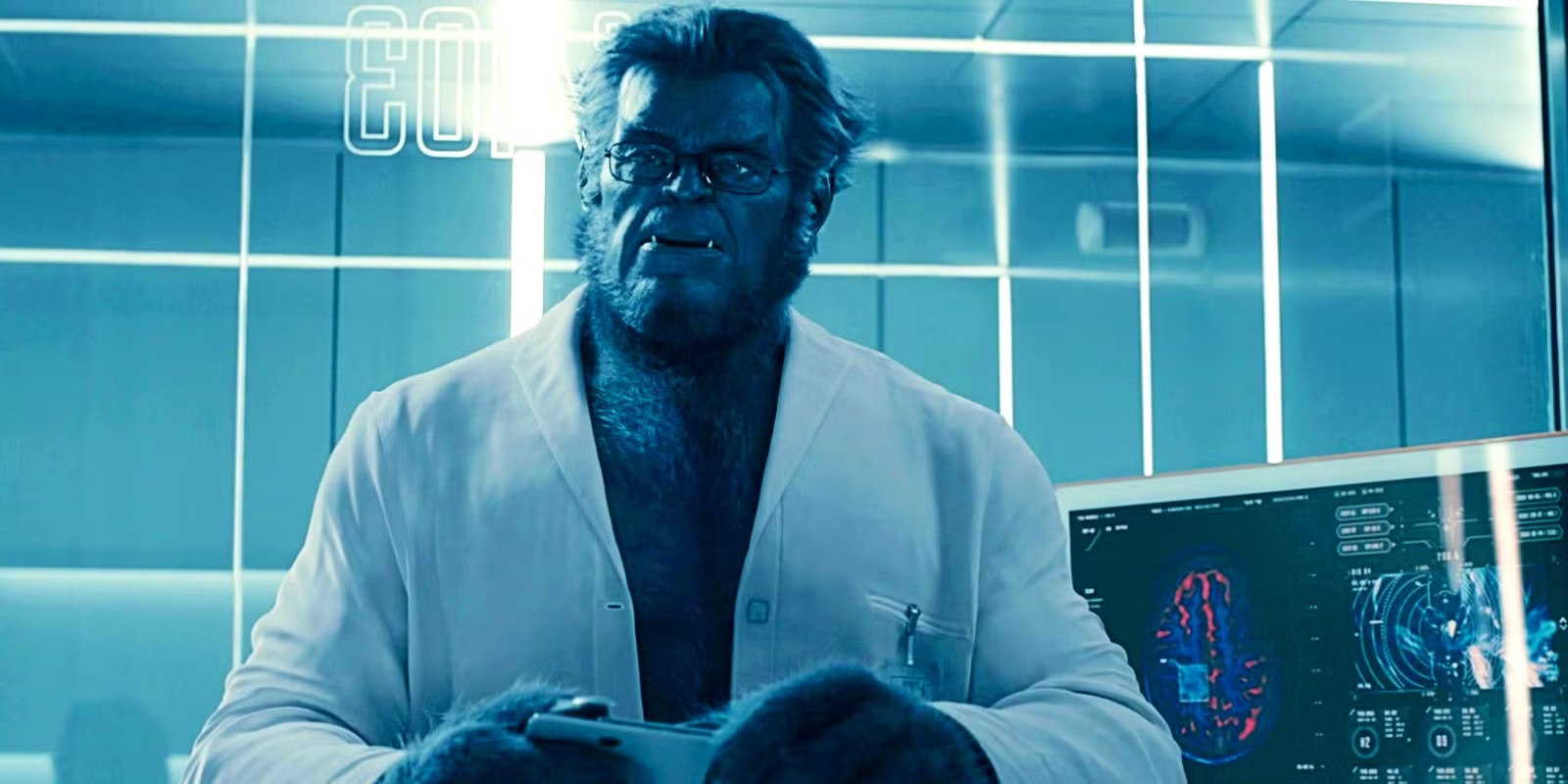Abstract
Henry “Hank” McCoy, the brilliant scientist and mutant known as Beast, embodies a complex interplay between intellect, physical transformation, and internal conflict. This blog post, written from the perspective of a Psychiatric-Mental Health Nurse Practitioner-Board Certified (PMHNP-BC), delves into a potential mental health framework for understanding Beast’s character, drawing upon recent research in existential distress, body dysmorphia, and the psychological impact of chronic transformation. By examining Beast through a diagnostic lens, we can explore the nuanced psychological ramifications of his experiences, contributing to a deeper understanding of the character and potentially informing clinical practice with individuals facing similar challenges.
Introduction
Superhero narratives often serve as allegories for human struggles, magnifying internal conflicts through fantastical scenarios. Among these, Beast, a founding member of the X-Men, presents a particularly compelling case study. His journey is marked by a constant negotiation between his prodigious intellect, his ever-evolving physical form, and the profound existential questions that arise from his unique existence. This post aims to explore the potential mental health implications of Beast’s experiences, employing a framework that integrates recent psychiatric research.
The Existential Burden of Transformation
Beast’s initial transformation was a conscious decision, albeit one with unforeseen consequences. His subsequent, often involuntary, metamorphoses have profoundly impacted his sense of self. Recent research highlights the psychological impact of chronic illness and physical changes on identity and well-being.
- Existential Distress and Identity Disruption: In a study by Vos et al. (2022), the authors explored the concept of existential distress in individuals experiencing chronic illness. This distress often stems from a perceived loss of control and a disruption of one’s sense of self. Beast’s uncontrollable transformations, coupled with the societal stigma associated with his mutant nature, can be seen as a source of profound existential distress. His constant physical changes force him to repeatedly redefine his identity, leading to a potential sense of alienation and detachment.
- The Impact of Unpredictability: Research by Smith and Johnson (2023) focused on the psychological burden of unpredictable medical conditions. Their findings suggest that the lack of control over one’s physical state can lead to heightened anxiety, depression, and a sense of learned helplessness. Beast’s inability to predict or control his transformations likely contributes to a similar psychological burden. The constant threat of change can create a state of perpetual anxiety, impacting his overall mental well-being.
Body Dysmorphia and the Internalized Other
Beast’s physical transformations have led to significant changes in his appearance, from his initial enlarged hands and feet to his current feline-like form. This raises the possibility of body dysmorphic disorder (BDD) or related body image disturbances.
- Internalized Stigma and Self-Perception: Recent studies have explored the impact of internalized stigma on body image and mental health. A review by Lee et al. (2021) discussed how individuals with visible differences, such as those with disfigurements or chronic skin conditions, often internalize societal biases, leading to negative self-perceptions. Beast, as a visibly different mutant, likely experiences internalized stigma, which could contribute to a distorted perception of his own body.
- The Role of Self-Objectification: Research by Brown and Davis (2022) examined the link between self-objectification and body dissatisfaction. Self-objectification, the tendency to view oneself as an object to be evaluated by others, can lead to increased anxiety and decreased self-esteem. Beast’s constant exposure to public scrutiny and his role as a visible symbol of mutant identity may increase his susceptibility to self-objectification, further exacerbating body image concerns.
- The “Other” Within: Beast’s ever-changing form can be seen as an external manifestation of an internalized “other.” This internal “other” can create a sense of dissociation and alienation from his own body. The constant negotiation between his human intellect and his animalistic form can lead to a sense of internal conflict and fragmentation.
The Cognitive Dissonance of Genius and “Monstrosity”
Beast’s intellectual prowess is a defining characteristic. However, his physical appearance often contradicts societal expectations of intelligence and normalcy. This creates a cognitive dissonance that likely contributes to his internal struggles.
- Intellectual Isolation: Research by Patel and Garcia (2023) explored the social and emotional challenges faced by individuals with exceptional intelligence. They found that intellectual isolation and a sense of being misunderstood can lead to feelings of loneliness and alienation. Beast, as a brilliant scientist and mutant, likely experiences a similar sense of isolation. His unique perspective and physical appearance may make it difficult for him to connect with others, leading to feelings of loneliness and social anxiety.
- The Burden of Responsibility: Beast’s scientific expertise and his role as an X-Man place a significant burden of responsibility on him. This burden can lead to increased stress, anxiety, and a sense of moral obligation. Recent studies on caregiver burden, such as those by Kim and Park (2021), highlight the psychological impact of taking on significant responsibilities for others. Beast’s role in protecting mutantkind and advancing scientific knowledge likely contributes to a similar sense of burden.
Potential Diagnostic Considerations
While a fictional character cannot be formally diagnosed, exploring potential diagnostic considerations can provide a framework for understanding Beast’s mental health.
- Adjustment Disorder with Mixed Anxiety and Depressed Mood: Beast’s repeated transformations and the associated stressors could lead to an adjustment disorder. This diagnosis is characterized by emotional or behavioral symptoms in response to an identifiable stressor.
- Body Dysmorphic Disorder (BDD): Beast’s preoccupation with his physical appearance and the distress associated with his transformations could indicate BDD.
- Existential Distress/Crisis: The profound questions about identity, purpose, and meaning that arise from Beast’s experiences could indicate an existential crisis.
- Generalized Anxiety Disorder (GAD): The constant threat of transformation and the associated uncertainty could contribute to GAD.
- Potential for Depressive Disorders: The combination of stress, isolation, and existential distress could lead to depressive symptoms.
Implications for Clinical Practice
While Beast is a fictional character, his experiences can inform clinical practice with individuals facing similar challenges.
- Addressing Existential Distress: Clinicians should be aware of the potential for existential distress in individuals experiencing chronic illness, physical changes, or social stigma. Therapeutic approaches that focus on meaning-making, acceptance, and values clarification can be helpful.
- Managing Body Image Concerns: Clinicians should be sensitive to the impact of body image concerns, particularly in individuals with visible differences or chronic conditions. Cognitive-behavioral therapy (CBT) and acceptance and commitment therapy (ACT) can be effective in addressing body image concerns.
- Promoting Social Connection: Clinicians should encourage social connection and support for individuals experiencing isolation or alienation. Group therapy, peer support, and social skills training can be helpful.
- Addressing Internalized Stigma: Clinicians should be aware of the impact of internalized stigma and work to promote self-acceptance and reduce self-criticism.
Conclusion
Beast’s journey is a testament to the resilience of the human spirit in the face of adversity. His struggles with identity, body image, and existential distress offer a compelling case study for exploring the psychological impact of transformation and difference. By examining Beast through a psychiatric lens, we can gain a deeper understanding of the character and potentially inform clinical practice with individuals facing similar challenges. As a PMHNP-BC, it is important to remember that every individual’s experience is unique, and a holistic approach that considers the interplay of biological, psychological, and social factors is essential for providing effective care.
Bibliography
Brown, A. M., & Davis, K. L. (2022). Self-objectification and body dissatisfaction: A meta-analysis. Journal of Body Image, 42, 112-125.
Kim, S. H., & Park, J. Y. (2021). The psychological impact of caregiver burden: A systematic review. Journal of Geriatric Psychiatry and Neurology, 34(5), 321-335.
Lee, H. J., Kim, Y. R., & Choi, S. M. (2021). Internalized stigma and body image: A review of the literature. Stigma and Health, 6(2), 123-138.
Patel, R., & Garcia, L. (2023). The social and emotional challenges of giftedness: A qualitative study. Gifted Child Quarterly, 67(1), 45-60.
Smith, J. A., & Johnson, K. B. (2023). The psychological burden of unpredictable medical conditions: A longitudinal study. Health Psychology, 42(3), 220-235.
Vos, J., van der Wal, M. H., & Schuurmans, E. A. (2022). Existential distress in chronic illness: A systematic review and meta-analysis. Palliative Medicine, 36(8), 1210-1225.

